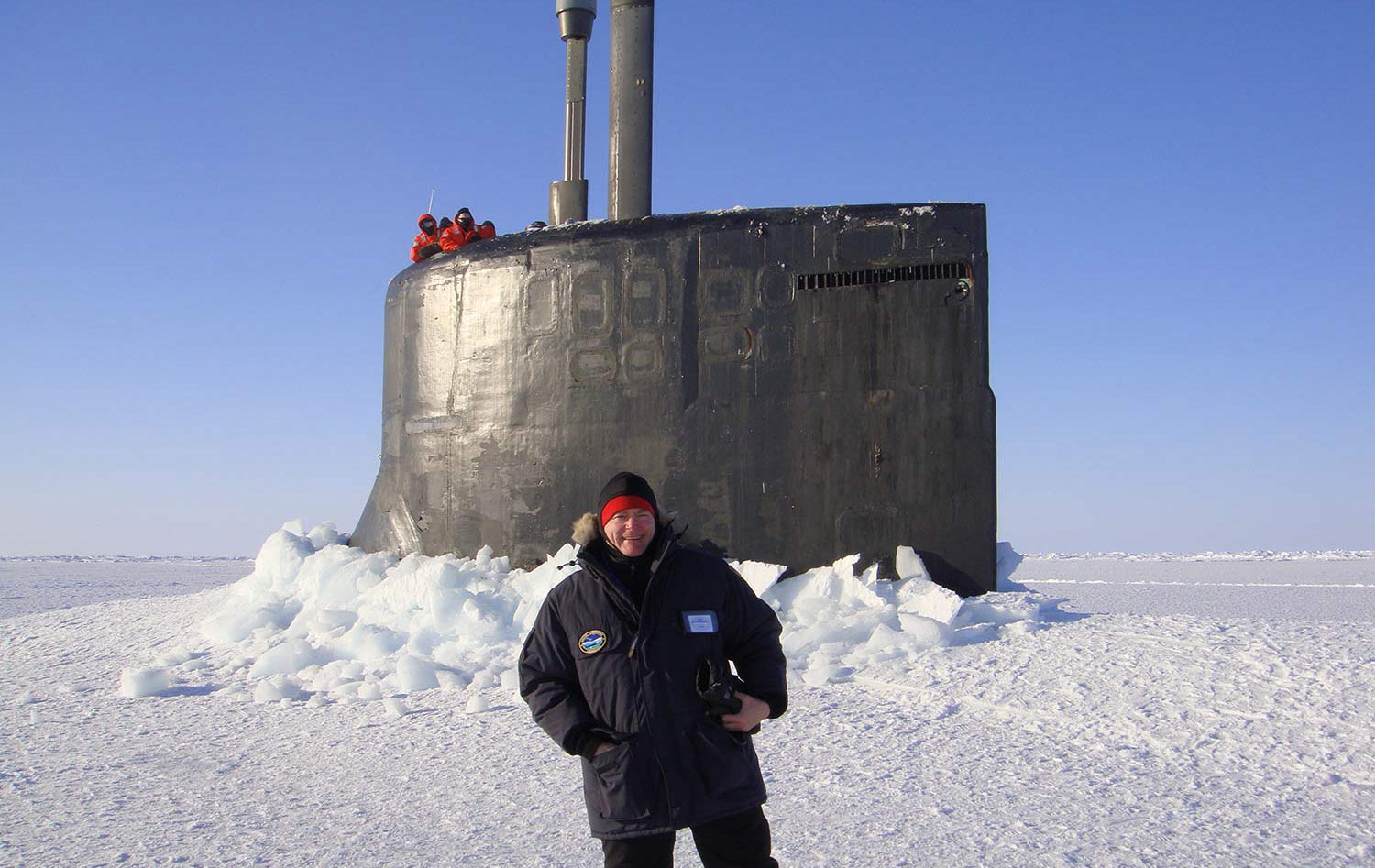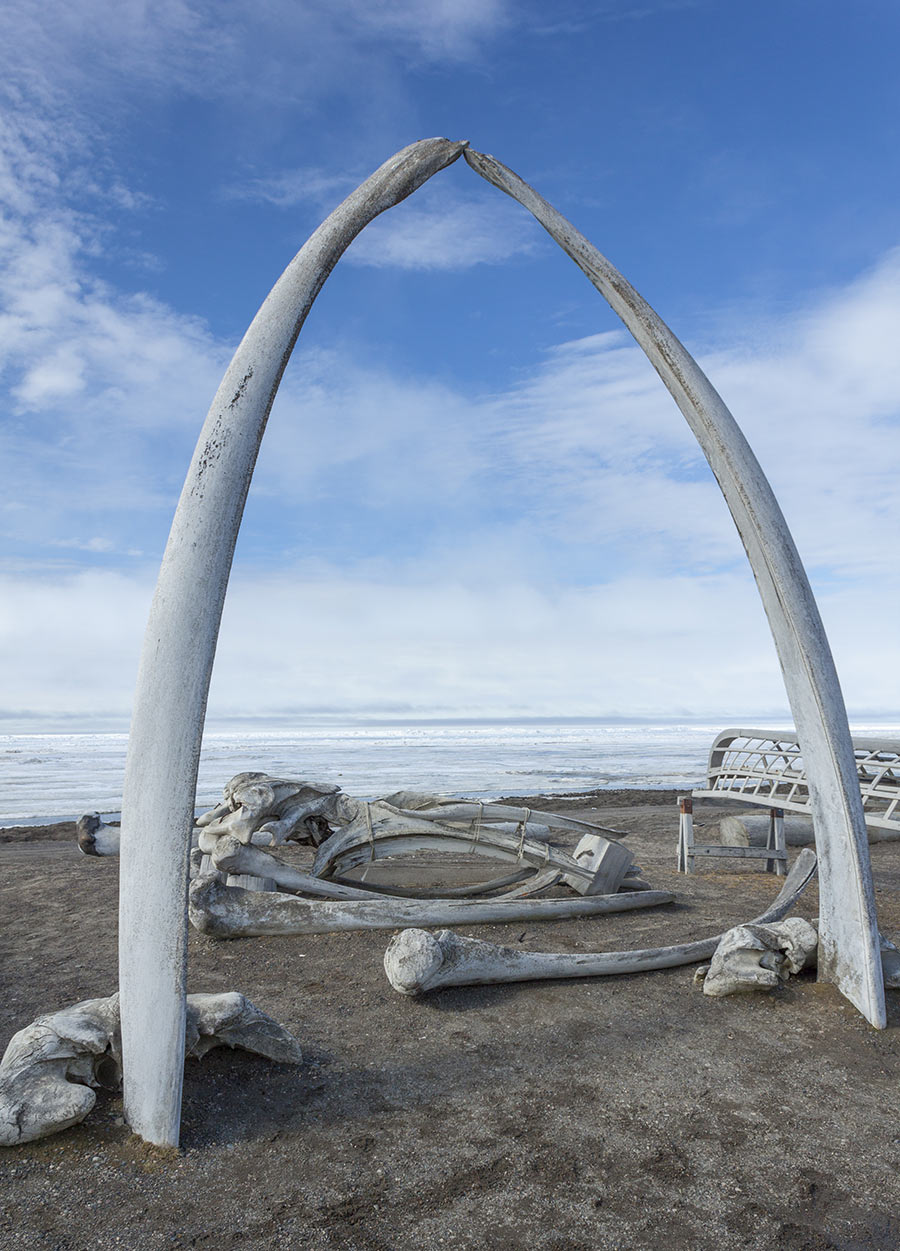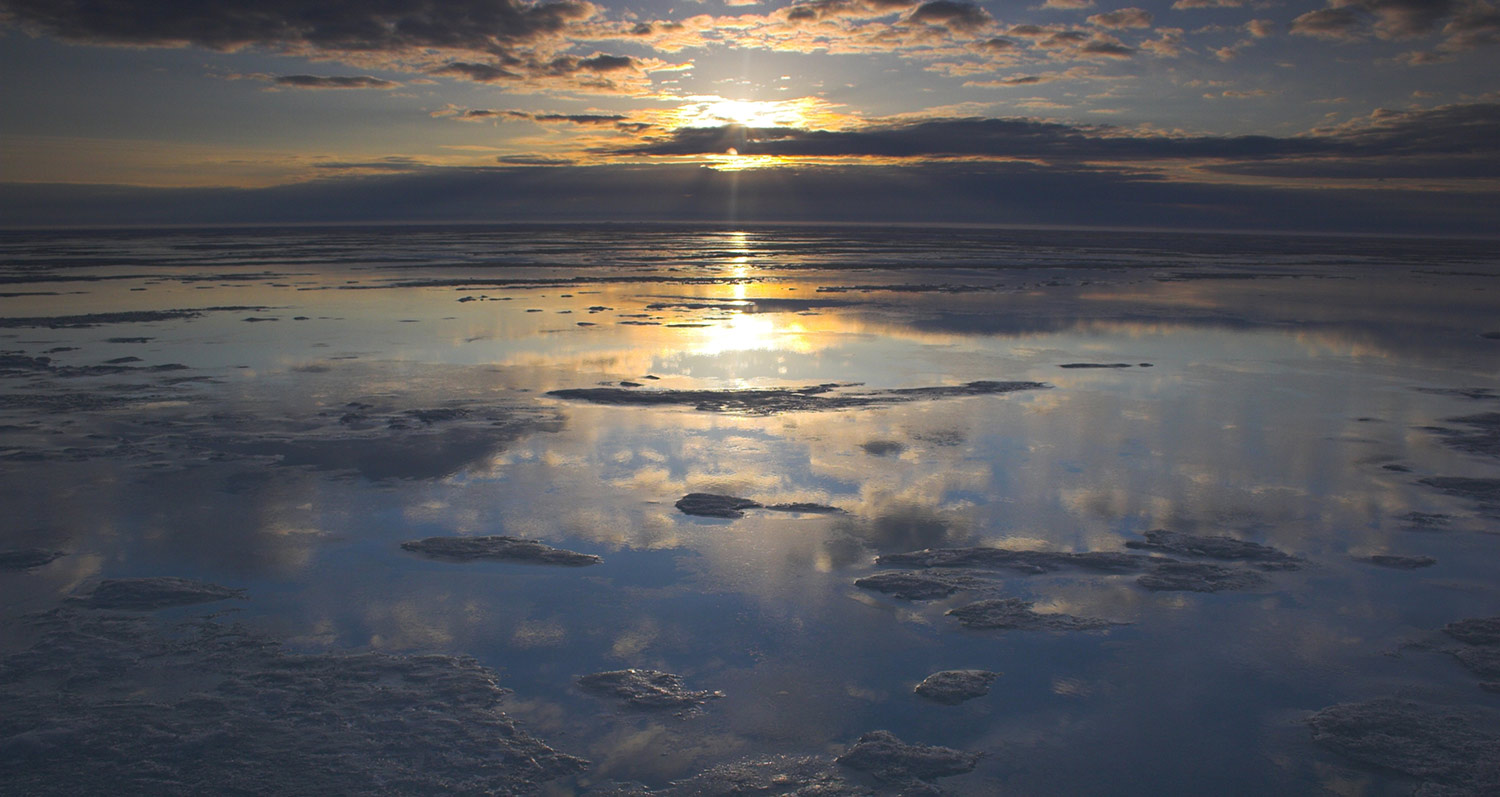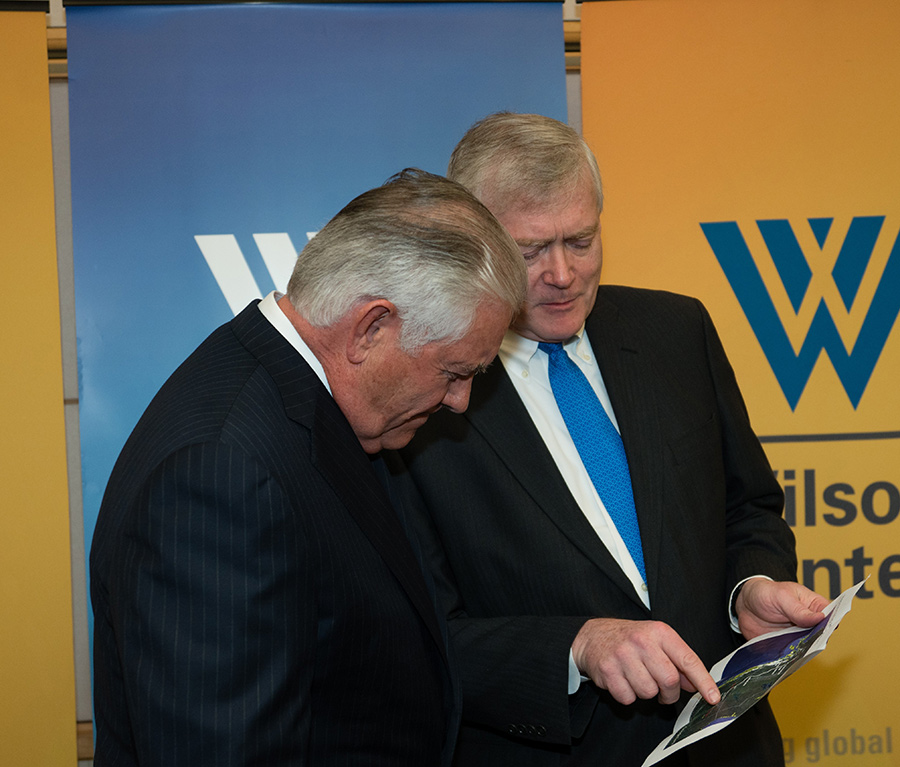
Harnessing Innovation in an Accessible Arctic
By Mead Treadwell
We need an owner’s manual for a new ocean: the Arctic.
The owner’s manual is necessary and timely because this is an ocean like no other. It is becoming more accessible to shipping and exploitation (in both the good and bad sense of the word) due to a changing climate – but not changing climate alone. Rapidly advancing technology has added to the Arctic’s accessibility. Global demand for Arctic resources – be those resources oil, gas, fish, minerals, new places for tourists to visit, or shortcuts for ships and airplanes – is bringing new human activity to this region, and quickly. This is not your grandfather’s Arctic.
We all own the ocean, though five nations will ultimately control most of the Arctic Ocean bottom. Countries as far away as India, Singapore, Japan, Korea, and China have joined the eight-nation Arctic Council as “observers,” but I think of them as partners because goods to and from their nations will be shipped through the Arctic. Somehow, as the world comes to this place, we need to ensure the needs of the people who live here – people who rely on Arctic Ocean species for food, and who currently pay large amounts for groceries, construction materials, and energy – are also met.

As an Alaskan, I became fascinated with the Arctic and its opportunities early in my career. The late 20th and early 21st centuries have seen rapid advances in political and technical innovation, as well as geographic exploration. But these advances didn’t just happen. I, other Alaskans with similar vision and curiosity, and Arctic residents had to push for them, usually in distant capitals like Washington, DC, Oslo, Helsinki, and Moscow, where Arctic opportunities were out of sight, out of mind.
I have lived in Alaska since the 1970s, and have watched the building of America’s largest oilfield on the Arctic Ocean shore of Alaska’s North Slope, resupplied by annual barge lifts, careful not to interrupt indigenous whalers and sealers who have used this ocean to feed their families for thousands of years.
In the early 1980s, I accompanied my mentor Wally Hickel – between stints as Alaska’s Governor, after his time as Secretary of the Interior – across Arctic Russia, when the Soviet government had closed this huge area to foreigners. Shortly thereafter, I traveled across Canada’s Arctic with famed Alaskan Arctic aviator and geologist Ron Sheardown, whose investigations have helped bring billion-dollar mining prospects to production in Russia, Alaska, and Arctic Canada.
Late in the 1980s, I helped convene leaders in the United States and Russia to open the border between our nations at the Bering Strait, and was there in Provideniya, Russia, in 1988 when we brought Alaskan and Russian Yupik families together for the first time after decades of a so-called ice curtain that kept them apart. We followed up that visit with many more. I led two expeditions to Wrangel Island in 1990 and, flying in old Russian bucket-of-bolts helicopters, mapped sites on Wrangel and the Chukchi coast to pioneer ecotourism in this “new” part of the world. It never became as fashionable as, say, trekking in Tibet or climbing Machu Picchu, but I’m proud to say that the firm I helped start – run by my friend Roman Bratslavsky, who emigrated from Russia in the late 1970s – brought close to 5,000 people to this part of the world to visit reindeer herders, walrus haul-outs, ancient archeological sites, and the bird rookeries and whale lagoons of the ice edge that can’t be seen anywhere else. For a time, we also shipped our Russian neighbors lots of groceries.
Serving in Governor Hickel’s cabinet as deputy commissioner of environmental conservation in the early 1990s, I represented our state in the first delegations to bring about eight-nation cooperation on environmental protection in the Arctic. At that time, climate change was not our main concern – it was the shipment of trans-boundary contaminants from old Cold War nuclear testing, coal burning power plants, and sources of heavy metals and organic pollutants. We helped re-write the secret U.S. Arctic policy, shifting its emphasis from being an under-ice battlefield for Russian and U.S. nuclear submarines to looking at protection of the environment and production of resources.
In those early days of Arctic cooperation, the delegations were small and the policy makers were agile. I remember attending an Arctic Environmental Protection Strategy meeting in Greenland in 1993, proposing the first Arctic radiological response drill – necessary to prepare for another Chernobyl-like nuclear accident or something worse – and getting it approved by eight nations in a single day. University of Alaska, Anchorage (UAA) Professor Glenn Shaw had educated me that the Arctic airmass in winter evenly spreads pollutants. That explained the so-called Arctic Haze around Denali, which actually comes from coal-burning power plants in Eastern Europe. Had the late April 1986 Chernobyl nuclear accident happened even a month earlier, people and wildlife in Northern Alaska might have suffered the same fate from fallout as Laplanders in Northern Norway, Sweden, and Finland. Even 28 years later, some reindeer were so radioactive they didn’t meet standards for the meat market.
Governor Hickel picked up his predecessor Steve Cowper’s pan-Arctic initiative and brought all the region’s governors together to form the Northern Forum. I was with most of those governors on a ship in Norway when Boris Yeltsin called them in 1991 to ensure they were with him against a hard-liner’s coup attempt, which would have ended the new Russia just as it was getting started.
Throughout the late 1990s and the first decade of this century, I kept one foot in business and another in the think-tank world, helping launch the Institute of the North. It was Hickel’s legacy research program, originally part of Alaska Pacific University. Our first Arctic studies focused on ways to make Northern shipping routes a reality, and we worked hard to focus the new eight-nation Arctic Council – successor to the Arctic Environmental Protection Strategy – on the infrastructure needs of the North.
My friend and mentor Dr. Walter Parker, a member of the U.S. Arctic Research Commission, worked with us to create the Arctic Council’s Circumpolar Infrastructure Task Force. Funding help from Senator Ted Stevens allowed us to achieve better aviation cooperation between the FAA and our neighbors in Russia and Canada. The U.S. military increased cooperation on search and rescue, and even prepared humanitarian aid missions to help flooded towns in Sakha (Yakutia). We started the international conversation on shipping, prodded by Northern Forum governors who saw the value of Arctic seaways in reducing the cost of living in their regions and helping get their energy and minerals – and maybe fish and reindeer meat – to global markets.

In 2001, President George W. Bush appointed me to the U.S. Arctic Research Commission. A former Coast Guard icebreaker captain, who holds the world record for taking the same ship to the northernmost and southernmost points in world oceans, joined our staff. Dr. Lawson Brigham, now at the University of Alaska, was our deputy director and led the eight-nation Arctic Marine Shipping Assessment. I was proud to attend the Ministerial in Iceland when we got it started, proud to send Lawson around the world to get the project written, and proud when, at a Norwegian Ministerial in Tromso in 2009, eight nations adopted the 188-page blueprint we’d written for marine safety in the Arctic Ocean.

Secretary of State Rex Tillerson and Mead Treadwell discuss the proposed Rail Link from Canada to Alaska at the Washington, D.C., Woodrow Wilson Center. Photo courtesy Woodrow Wilson Center.
Two years after that, I’d moved from serving as chair of the presidentially appointed commission under both Presidents Bush and Obama to being elected lieutenant governor of Alaska with Gov. Sean Parnell. In 2011, Senator Lisa Murkowski and I traveled to Greenland with Hillary Clinton – the first U.S. Secretary of State to attend an Arctic Council meeting – as we signed a binding search and rescue agreement in the Arctic, called for by our 2009 report. Two years after that, Secretary of State John Kerry signed the first oil spill prevention and response agreement, also one we’d advocated. A binding polar code, another of our recommendations, was adopted by the International Maritime Organization in 2014 and went into effect in early 2017.
Since 2014, at the invitation of Iceland’s former President Olafur Ragnar Grimsson and Arctic Now publisher Alice Rogoff, I’ve been chairing the Arctic Circle Mission Council on Shipping and Ports, and we’ve proposed that the nations at the top of the world get together like the U.S. and Canada did to establish the Saint Lawrence Seaway. We’re working with the Alaska congressional delegation to find a way with this seaway to pay for the new ports and icebreakers the Arctic Ocean needs to ensure that shipping is “safe, secure, and reliable” – three words that U.S. Senator Dan Sullivan and I worked to insert into the U.S. Arctic policy signed by President Bush in 2009. We also envision a league of Arctic ports.
From my 40-year Arctic tromp to meet our neighbors, I have more stories than you could stand to read. It was fun to camp out on the Arctic ice in 2011 with three admirals as one of the biggest, baddest nuclear attack submarines the U.S. has (the USS Connecticut) rose through the ice next to us to test new technologies. I never thought I’d find myself as the only person, alone at 2 a.m., at a Russian nuclear power plant in Bilibino, using the only computer in town to write up the the incident notification agreement between the plant and environmental authorities in Alaska. The time that Russian scientists left a baby polar bear in a box in the living room of our cabin on Wrangel Island exemplified the Arctic for me: It can be endearing and beautiful, but also deadly.
Innovation – in politics, in space sensor technology, in telecommunications, in aviation, in shipping (a double ended icebreaker, spoon shaped at one end for ice, v-shaped at the other for heavy seas, is the new normal for icebreaker design, thanks to some brilliant work in Finland) – is what’s driving us to a safer, more accessible Arctic. Today, I’m working with a string of businesses, many Alaska Native-owned, to make sure the economic opportunities are shared by the people who live here. I chair the Polar Advisory Board for the satellite firm Iridium, and we’re launching 70 new birds this year to bring better telecom capability to the North. At Pt Capital, we’re investing in Alaska, Canada, Iceland, and Greenland, and helping to stitch together the North economically.
All told, there’s lots to be done – lots of fun to be had – and lots of innovation to bring to the process. I hope future generations give us credit, because what many Arctic players have in mind is maintaining the wonder and beauty and culture and biodiversity of the top of the world, while making it far more useful to humankind.

Mead Treadwell is President of Pt Capital, an Arctic-focused private equity investor based in Anchorage, Alaska. He served as Lt. Governor of Alaska from 2010 to 2014 and Chair and Commissioner of the U.S. Arctic Research Commission under Presidents Bush and Obama from 2001 to 2010. He chairs the North Pacific Alaska Chapter of the Explorers Club and Iridium’s Polar Advisory Board, and co-chairs the Woodrow Wilson Center’s Polar Initiative.
Mead Treadwell
President
Pt Capital